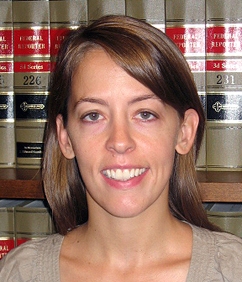NY Civil Liberties Clinic helps win major settlement to reform New York State’s public defense system
Law school clinics and their local communities in need have always had a mutually beneficial relationship. Clinic students gain opportunities to hone their legal skills on real world cases, and in exchange, communities with limited resources have a small battalion of lawyers-in-training advocating for their cause. In Hurrell-Harring v. New York, the Law School’s New York Civil Liberties Clinic made key contributions in a class action lawsuit that culminated in a historic settlement for reforming New York State’s public defense system.
In this seven-year-long suit, the New York Civil Liberties Union, law firm Schulte Roth & Zabel, and students from the clinic demonstrated that the New York State public defense system violated the Constitution by not providing poor defendants with adequate legal representation. Dysfunctional and understaffed, the system left poor defendants to be routinely arraigned without attorneys, burdened by high bail, and imprisoned for long periods of time for petty crimes. In the settlement, New York State agreed to a series of major reforms, including ensuring that poor defendants have lawyers at their first court appearance, and substantially limiting the number of cases carried by public defense lawyers.
While lawyers with the NYCLU and Schulte Roth & Zabel did the majority of the heavy lifting, NYCL clinic students made vital contributions, said Corey Stoughton, NYCLU’s lead attorney on this suit, an NYU Law adjunct professor and head of the clinic. “Marshaling the legal resources needed to do a case like this on behalf of poor people is an enormous challenge, and we couldn’t have done it without the students,” she said.
While clinic students worked on many aspects of the case over the years, a few contributions were key. One project emerged at a critical point in 2013, following New York State’s motion for summary judgment. As part of the effort to oppose the motion that sought to end the suit, a team of three students— Atoosa Esmaili '14, Douglas Keith '15 and Lisa Sangoi '15—spent an entire semester assembling evidence, scouring deposition transcripts and documents and researching admissibility issues to make sure that evidence was sound. The students also organized the evidence into different categories of systemic failure—for example, failure to use expert witnesses—that would support the case.
Stoughton likened the students’ task to taking jigsaw pieces to form a new puzzle. “You take evidence that is just in a great big pile and you sculpt it into a narrative of your case,” she said. “This work required a top-to-bottom understanding not only of the legal theories you were pursuing but every piece of evidence that you had, so that you could explain how every piece fit into your trial narrative.”
Sangoi remembered grappling with the complexity of evidence from the case files of public defender organizations. “They were giving us really substantive questions, and using our answers,” she said. Keith noted that the lawsuit was going full-steam ahead at the beginning of his semester in the clinic, and there was much work that he and his fellow students were responsible for. “The clinic did a great job of giving us work that really needed to get done and was going to be central to briefs that we filed with the court,” said Keith.
The evidence that Keith, Sangoi, and Esmaili gathered, analyzed, and categorized eventually became the suit’s brief and record. And both Keith and Sangoi went on to pursue positions in public interest. Sangoi, who has since worked at the ACLU and Brooklyn Defender Services, plans to work in public defender services. Esmaili works at employment law firm Liddle & Robinson.
In another major contribution early in the lawsuit, students traveled to Long Island to find new class members during the discovery phase of the lawsuit. Because the case required new stories for trial, and there were multiple delays as the lawsuit moved toward trial, students went through several rounds of finding stories. They observed criminal court proceedings in towns and villages, and they witnessed defendants appearing at arraignments without representation—something that the counties and state denied happened with frequency.
Because of the students, the legal team was able to identify new members of the class and remain in touch with them. “Without the students, things would have moved slower and we would have missed opportunities to make connections,” said Stoughton. “Maintaining contact with people who are member so the class is an extraordinary challenge.”
Finally, in an instance that highlights how extraordinary the clinic experience can be, Amy Oden ‘15 had the unique challenge of preparing examination outlines for the trial testimony of one of the class members in spring 2014. This is typically work that a senior associate or junior partner would be responsible for at a law firm, said Stoughton, but Oden, as a 2L, was able to serve as the primary drafter for the outlines. “Given the time that she had, she did an excellent job,” said Stoughton.
Not only did the students get a ground-level view of litigation, but they also played important roles in a historic case that has wide ramifications and has drawn the attention of other states as well as the Department of Justice, which filed a statement of interest in the case in September. “New York is not alone in struggling to figure out how to deliver the Sixth Amendment right to counsel,” said Stoughton. “There are places all across the country looking to the litigation here as an example for how to breathe life into the Sixth Amendment.”
Posted December 23, 2014


